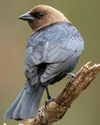
Many backyard guests—such as monarchs and orioles-make for warmer climates as temperatures drop. The rest hunker down. How they prepare and where they lay their heads sometimes differ even within the same species. But no matter how they overwinter, they do it for the same reason: to conserve energy.
As days shorten, animals take the cue from Mother Nature and add layers of fat while food is more available. These reserves essentially act as a big bank of energy that animals draw from while they're in the deep-sleeping state of hibernation,” says Kevin Brunke, natural history biologist with the Missouri Department of Conservation.
To make those reserves last, animals lower their metabolism and body temperature and slow their heart rate and breathing. “They burn fewer calories while they wait for more favorable foraging opportunities to become available,” Kevin says.
Deep Sleepers
Hibernation champs include groundhogs, ground squirrels, meadow jumping mice and some species of bats. These bona fide hibernators remain in a state of inactivity for several days, weeks or months and can sleep through loud noises and other commotion.
This story is from the December 2021/January 2022 edition of Birds & Blooms.
Start your 7-day Magzter GOLD free trial to access thousands of curated premium stories, and 8,500+ magazines and newspapers.
Already a subscriber ? Sign In
This story is from the December 2021/January 2022 edition of Birds & Blooms.
Start your 7-day Magzter GOLD free trial to access thousands of curated premium stories, and 8,500+ magazines and newspapers.
Already a subscriber? Sign In

Clever Cowbirds
Learn more about these birds that are infamous for letting others raise their young

Meet the ORIOLES
GET TO KNOW eight TYPES SEEN THROUGHOUT THE U.S. AND WHAT MAKES EACH ONE STAND OUT

Welcome, New Blooms
Update your yard with 2024's freshest florals

Life Well Lived
Surprising facts about bird life spans

nectar-rich natives
Create a hummingbird haven, no matter where you live, with plant picks best suited for your region

BRAVEST BIRDS ON THE BLOCK
Friction inevitably takes place among backyard visitors, and scientists share how to help create some calm

Spring into Action
Bird activity abounds as the season of renewal arrives

Jewels of the Desert
Learn about this tiny yet dramatic Southwest native, the Costa's hummingbird

Moth TALES
Readers share cool snapshots of these mysterious fliers

AWARD-WORTHY Owl's
THESE EIGHT BIRDS OF PREY DESERVE TO BE RECOGNIZED FOR THEIR STANDOUT CHARACTERISTICS